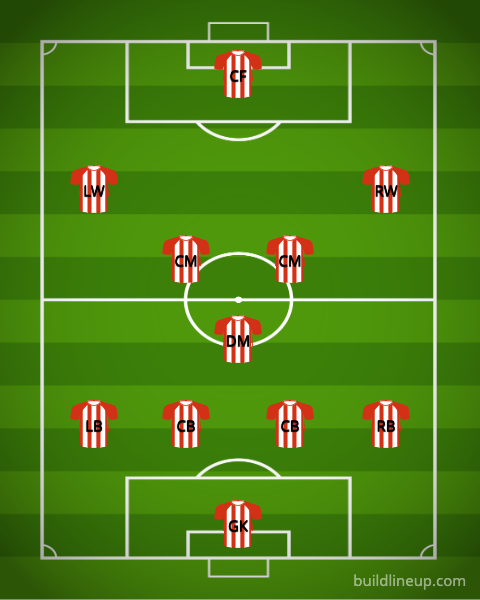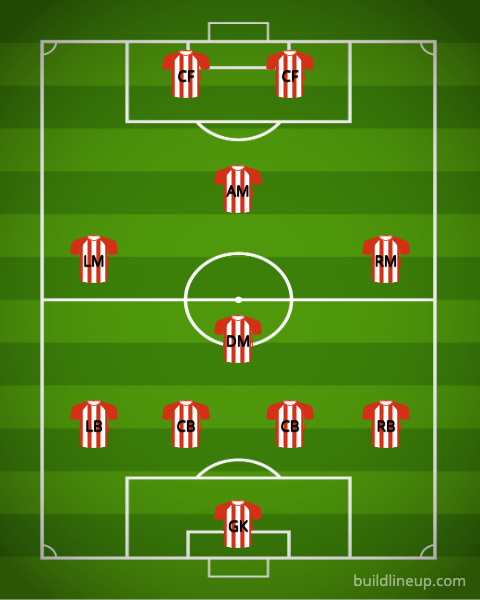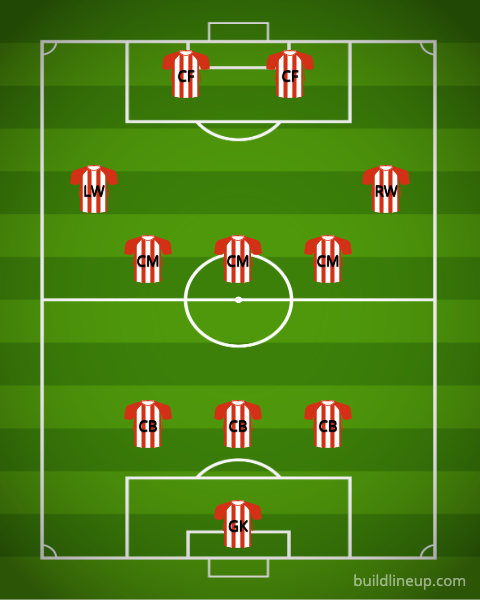What are the three most popular soccer formations in international soccer?
There are many formations used in soccer, and the most popular ones can vary depending on the team, the league, and the country. However, there are three formations that are commonly used by many teams around the world.

Soccer is a complex game that requires a unique combination of technical, physical, and tactical skills. One of the most important tactical elements of the game is the formation, which refers to the positioning and roles of the players on the field. There are many different formations used in soccer, each with its own strengths and weaknesses. In this article, we will explore the most common formations used in soccer and examine the strategies and tactics behind each one
4-3-3 Formation
This is a popular attacking formation that consists of four defenders, three midfielders, and three forwards. It's a flexible formation that allows teams to control the midfield while also providing plenty of attacking options.

In a 4-3-3 formation, the positions are typically as follows:
Goalkeeper: The goalkeeper is the last line of defense and plays in the goal.
Defenders: There are four defenders in a 4-3-3 formation. They are typically split into two center-backs and two full-backs. The center-backs play in the center of the defense and are responsible for marking the opposing team's forwards, while the full-backs play on the sides of the defense and are responsible for both defending and supporting the team's attacking play.
Midfielders: There are three midfielders in a 4-3-3 formation. They are typically split into one defensive midfielder and two attacking midfielders. The defensive midfielder plays in front of the defense and is responsible for breaking up the opposing team's attacks, while the attacking midfielders play higher up the field and are responsible for creating and supporting the team's attacking play.
Forwards: There are three forwards in a 4-3-3 formation. They are typically split into one center forward and two wingers. The center forward plays in the center of the attack and is responsible for scoring goals, while the wingers play on the sides of the attack and are responsible for providing width and creating scoring opportunities.
It's important to note that these positions can vary depending on the team and the game plan, and players may be asked to play in different positions or roles throughout the course of a match.
Here are a few examples of national soccer teams that have used the 4-3-3 formation: Netherlands, Spain, Brazil, Portugal en Germany.
4-4-2 Formation
This is a more traditional formation that consists of four defenders, four midfielders, and two forwards. It's a balanced formation that provides a strong defensive base while also allowing for quick counter-attacks.

In a 4-4-2 formation, the positions are typically as follows:
Goalkeeper: The goalkeeper is the last line of defense and plays in the goal.
Defenders: There are four defenders in a 4-4-2 formation. They are typically split into two center-backs and two full-backs. The center-backs play in the center of the defense and are responsible for marking the opposing team's forwards, while the full-backs play on the sides of the defense and are responsible for both defending and supporting the team's attacking play.
Midfielders: There are four midfielders in a 4-4-2 formation. They are typically split into two central midfielders and two wide midfielders. The central midfielders play in the center of the midfield and are responsible for controlling the game and breaking up the opposing team's attacks, while the wide midfielders play on the sides of the midfield and are responsible for providing width and supporting the team's attacking play.
Forwards: There are two forwards in a 4-4-2 formation. They are typically split into one center forward and one supporting striker. The center forward plays in the center of the attack and is responsible for scoring goals, while the supporting striker plays behind the center forward and is responsible for creating scoring opportunities and linking up play.
While the popularity of the formation has decreased in recent years, there are still some national soccer teams that use the 4-4-2 formation.
Here are a few examples: England, Sweden, Denmark, Scotland and Nigeria.
3-5-2 Formation
This is a more attacking formation that consists of three defenders, five midfielders, and two forwards. It's a flexible formation that allows teams to control the midfield while also providing plenty of attacking options.
It's worth noting that formations can be adjusted and modified depending on the strengths and weaknesses of the team and the opposition, and that many teams use variations of these formations or even completely different formations altogether.

In a 3-5-2 formation, the positions are typically as follows:
Goalkeeper: The goalkeeper is the last line of defense and plays in the goal.
Defenders: There are three defenders in a 3-5-2 formation. They are typically split into one central defender and two wing-backs. The central defender plays in the center of the defense and is responsible for marking the opposing team's forwards, while the left and right centerbacks play on the sides of the defense and are responsible for both defending and supporting the team's attacking play.
Midfielders: There are five midfielders in a 3-5-2 formation. They are typically split into three central midfielders and two wide midfielders. The central midfielders play in the center of the midfield and are responsible for controlling the game and breaking up the opposing team's attacks, while the wide midfielders play on the sides of the midfield and are responsible for providing width and supporting the team's attacking play.
Forwards: There are two forwards in a 3-5-2 formation. They are typically split into one center forward and one supporting striker. The center forward plays in the center of the attack and is responsible for scoring goals, while the supporting striker plays behind the center forward and is responsible for creating scoring opportunities and linking up play.
It's important to note that these positions can vary depending on the team and the game plan, and players may be asked to play in different positions or roles throughout the course of a match. Additionally, the wing-backs in a 3-5-2 formation are often tasked with both defensive and attacking duties, so they need to be versatile players who can cover a lot of ground.
Here are a few examples of national soccer teams that have used the 3-5-2 formation: Italy, Argentina, Chile, Mexico and Switzerland.




